12 Making Sense of the Climate Crisis
Activists and scientists use a variety of perspectives to understand climate change and climate activism. This section will look at environmental justice, environmental race theory, ecofeminism, youth climate change activism, and Critical Environmental Justice theories and actions.
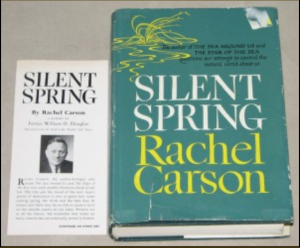
Figure 8.15. Silent Spring Book Cover. Environmentalist Rachel Carson wrote the book Silent Spring. Published in 1962, it described how the pesticide DDT was killing birds. As a result, DDT was banned, and eagles, brown pelican, and osprey populations have rebounded. However, bird populations are generally still in decline, representing one component in biodiversity loss (Guynup 2022).
In addition to warming temperatures and loss of wildlife, we can look at climate change through the lens of the social problems process. As we examine how the environmental movement began in the United States, we begin with environmentalist and author Rachel Carson. In her book Silent Spring (1962), she described how toxic pesticides were killing populations of robins and causing deeper environmental damage, as seen in figure 8.15. This book highlights the work of activists of the time making claims about environmental problems, which is Step 1 of Claims-making in Best’s model of the social problems process.
By raising these issues with books, articles, and debates, activists used the media in various ways to engage people. Public awareness steadily grew concerning the connection between human activity, ecological degradation, and the dramatic loss of biodiversity. This awareness is covered in Step 2: Media Coverage and Step 3: Public Reaction in the Best Claims Making Model. Out of this awareness, the environmental movement was formed to put pressure on political institutions to address the damage that had already occurred and prevent further harm from happening in the future.
As a result of an increase in public awareness and an admirable concerted effort by the environmental movement, many governments banned or restricted the use of DDT and similar pesticides. The changes in policies show Step 4: Policymaking in the model. The changes in laws, regulations, and policies have saved many threatened species. They have also held polluting industries accountable for the damage that they caused. The implementation of government laws and policies is incorporated in Step 5: Social Problems Work, and Step 6: Policy Outcomes. Although the work of environmental change is ongoing, we find concrete examples of Best’s model at work in society.
What is Environmental Racism?
Environmental racism is any environmental policy or practice which disadtoxic pesticides were based on race . The term was first coined in 1982 by Reverend Dr. Benjamin Chavis during what many consider one of the earliest environmental justice actions in the U.S. Warren County, North Carolina residents came together to protest the siting of a toxic landfill in a predominantly Black community (Bullard 2000). Chavis (1994) defined environmental racism as:
racial discrimination in environmental policymaking and enforcement of regulations and laws, the deliberate targeting of communities of color for toxic waste facilities, the official sanctioning of the presence of life-threatening poisons and pollutants for communities of color, and the history of excluding people of color from leadership of the environmental movement. (Chavis 1994)
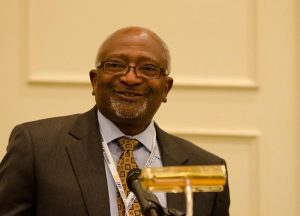
Figure 8.16. Environmental sociologist Robert D. Bullard is often described as the “Father of Environmental Justice.”
Environmental sociologist Robert D. Bullard is often described as the “Father of Environmental Justice.” His book Dumping on Dixie: Race, Class, and Environmental Quality (1990) was the first book describing environmental racism. Bullard discussed a landmark study he conducted in 1979 concerning the locations of all the municipal solid-waste sites in Houston, Texas. This research was part of the first class-action lawsuit in the US to charge environmental discrimination under the Civil Rights Act. The lawsuit Bean v. Southwestern Waste Management was in response to the siting of a landfill in a suburban middle-class neighborhood in which Bullard described as “an unlikely location for a garbage dump––except that over 82 percent of its residents were African American” (p. xiv) .
Results from Bullard’s research inspired him to investigate four other Black communities in the South to see if there was indeed a correlation between race and increased exposure to toxic facilities and other locally unwanted land uses. His research findings revealed that “the siting of local waste facilities was not random” (p. xiv) but were in fact clear examples of institutional racism––laws and policies that have intentionally and systematically marginalized Black communities for generations.
Bullard’s groundbreaking research provided convincing evidence of environmental discrimination. He defined environmental discrimination as the “disparate treatment of a group or community based on race, class, or some other distinguishing characteristic,” an experience he saw as a “fact of life” for Black communities. At the center of this legacy of discrimination, he argued, was structural and individual racism, which led to the “impoverishment of Black communities . . . [making] it easier for Black residential areas to become the dumping grounds for all types of health-threatening toxins and industrial pollution” (p. 7) . Bullards work illustrated how and why past injustices continue to affect and harm historically oppressed communities today.
Environmental racism also includes the colonialist land theft from Indigenous people. Indigenous scholar Roxanne Dunbar-Ortiz argued in An Indigenous Peoples’ History of the United States, that “everything in US history is about the land,” at least in terms of increasing European and Euro-American wealth and power (Dunbar-Ortiz 2014).
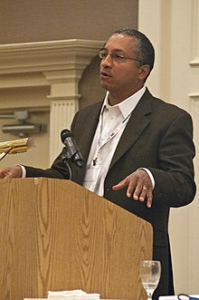
Figure 8.17. David Pellow is a sociologist and activist who researches environmental justice.
Researcher and activist David Pellow wrote the 2017 book What is Critical Environmental Justice? agrees. He argues that environmental injustice was a major component of the European colonization agenda. From the theft of nearly all Indigenous historical lands; the extermination of entire cultural groups and millions of Indigenous peoples; the control, commodification, and over-exploitation of natural resources, and the enslavement of millions of Indigenous and African peoples to “work the land,” environmental racism has been a problem in the U.S. from the start.
Environmental injustice can be traced much further back in US history to the exploitation and extermination of millions of Indigenous peoples and the violent seizure of their ancestral lands as a result of European and Euro-American colonization and warfare (Jarratt-Snider and Nielson 2020). To learn more about David Pellow’s work, watch his 6.42 minute video, Polluting the Voiceless [Video].
What is Environmental Justice?
Environmental racism and environmental injustice call for environmental justice. This call is both a social movement and an academic theory. Environmental justice (EJ) is an intersectional social movement pioneered by African Americans, Indigenous peoples, Latinx, lower-income, and other historically oppressed populations fighting against environmental discrimination within their communities and across the world.
Environmental justice is also an academic theory explaining the causes and consequences of environmental inequality and supporting action. As a social movement, EJ is rooted in the struggles of the Civil Rights Movement and its fight to end racial segregation and structural inequality in the 1950s and 1960s. It operates “under the assumption that all Americans have a basic right to live, work, play, go to school, and worship in a clean and healthy environment” (Bullard 2000).
The EJ movement began to receive widespread public attention in the early 1980s after a series of grassroots actions took place against the polluting practices of toxic industries. Federal and state governments failed to regulate these industries in historically marginalized communities. With a deep awareness of institutional racism and the socioeconomic inequalities in the U.S. and elsewhere, early EJ activists recognized that all forms of injustice were interconnected.
Therefore, the struggle for a healthy environment must also include access to quality schools and education, adequate and safe housing, green spaces, fresh food, clean water, and sustainable employment opportunities (Checker 2007). What makes this movement unique and strong is the intersectionality of the injustices it seeks to address and the diverse communities it brings together to address various types of social inequities (Schlosberg 2007).
In an alternate definition, The Environmental Protection Agency (2018) defines EJ as the “fair treatment and meaningful involvement of all people regardless of race, class, color, national origin or income with respect to the development, implementation, and enforcement of environmental law, regulations, and policies.” To many activists and scholars, however, the EPA’s definition holds little weight, considering that polluting industries are rarely, if ever, held accountable for the harm they cause (Pellow 2017).
Many EJ activists and scholars also recognize how social inequalities of all kinds are deeply embedded within the structure of the government. Therefore, they find it hard to rely on government oversight to protect their communities. Often, the government and the legal system allow these injustices to occur in the first place (Estes 2019). Many communities who strive for environmental justice create local solutions themselves. They form alliances, conduct direct action campaigns, invest in mutual aid efforts, and practice direct democratic principles to achieve their goals (Pellow 2017). We’ll look at some examples later.
What is Ecofeminism?
Figure 8.18. Gender inequality is showing up… in climate change [YouTube]. The first 12 minutes of this TED talk show Canadian researcher Amber Fletcher interviewing farm women to demonstrate how climate change impacts agriculture in Canada. How is this information new to you?
Women and children are disproportionately impacted by climate change. The video in figure 8.18 explores this topic in more detail. In response to this and other gendered inequalities, women and nonbinary people are thinking, researching, and taking action. This strand of feminist theory and action is called ecofeminism. Ecofeminism connects the domination of women to the domination of the environment. To learn more, read the article Ecofeminism: Encouraging Interconnectedness with Our Environment in Modern Society, where researchers Mondal and Majumder (2019) write, “bringing together feminism and environmentalism, ecofeminism argues that the domination of women and the degradation of the environment are consequences of patriarchy and capitalism” (n.p.).
In addition to being a theory that fundamentally names the intersectionality of the oppression of women and non-binary people with the destruction of the environment, ecofeminism champions taking action. Women themselves say that they must become climate change activists to create a world where their children can survive and thrive.
To witness one example, you may want to watch the TED talk EcoGrief and Ecofeminism, where Heide Hutner tells her own story of cancer. She also links her grief and her activism to the activism of women around the world. Similarly, you may want to listen to Terry Tempest Williams tell the story of The Clan of the One-Breasted Women. She can connect the event of nuclear testing with her family’s health. She describes how this leads her to activism.
What is Youth Climate Activism?
Young people worldwide are taking action to end climate change, using social media to connect rich and poor countries. Their passion is creating action in new ways. Let’s meet two activists and explore what youth climate action looks like.
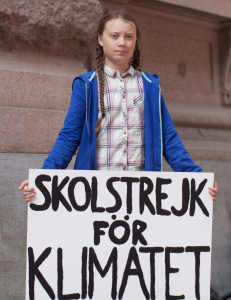
Figure 8.19. Greta Thunberg, environmental activist, holds a sign reading “School Strike for Climate Change.”
Greta Thunberg is a youth activist from Sweden. She began protesting in front of government offices in 2018 with other young people. This small action has grown into a worldwide movement, using youth energy and new forms of social media to mobilize and educate people.
In a speech in Berlin in March 2019, Thunberg said, “We live in a strange world where children must sacrifice their own education in order to protest against the destruction of their future. Where the people who have contributed the least to this crisis are the ones who are going to be affected the most.”
Her movement, Fridays for Future, started when she and other activists protested in front of the Swedish parliament to draw attention to climate change. Their social media posts went viral and encouraged other youth to take action (Fridays for Future 2022).
#FridaysForFuture continues to mobilize youth around the world. 100,000 people marched in Glasgow in 2021 to protest during the Global Climate Conference . Some estimated that 7.6 million youth have participated in global climate action. Youth are taking action worldwide, in both rich and poor countries. (Hasegawa 2022). Another young activist making a difference is Autumn Peltier.
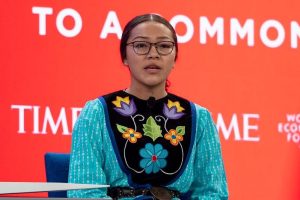
Figure 8.20. Autumn Peltier, youth water activist at the World Economic Forum 2021.
In my culture, my people believe that water is one of the most sacred elements. It’s something we honor. My people believe that when we’re in the womb, we live in water for nine months and our mother carries us in the water. As a fetus, we learn our first two teachings: how to love the water and how to love our mother. As women, we’re really connected to the water in a spiritual way. We believe that we’re in ceremony for nine months when we carry a baby. Another way to look at it is that water is the lifeblood of Mother Earth, and Mother Earth is female. (Autumn Peltier 2021)
Autumn Peltier is a world-renowned water protector, activist, and citizen of the Wikwemikong First Nation on Manitoulin Island, Ontario, Canada. Since she was 8 years old, she has fought for clean water in Canada. In 2019, Peltier was appointed as the Anishinabek Nation Chief Water Commissioner following the death of her great-aunt, Josephine Mandamin, who had been the previous Chief Water Commissioner. She remains in that position today. She criticized the Canadian Prime Minister, spoke at the United Nations, and led youth and Indigenous advocacy efforts. If you would like to learn more about Autumn Peltier, she tells her story in The teen fighting to protect Canada’s water – meet Autumn Peltier [YouTube].
In a recent article, Karen O’Brian, Elin Selboe, and Bronwyn Hayward propose that young people engage in three kinds of activism regarding climate change and environmental justice: dutiful dissent, disruptive dissent, and dangerous dissent.
The dutiful dissenters create change by working within the system. They may work with school organizations to create recycling programs or policies around investment. “Through dutiful dissent, youth activists work within existing systems to express their discontent with business as usual and to promote alternative responses to climate change” (O’Brian, Selboe, and Hayward 2018). In contrast, disruptive dissenters stage strikes and protests that highlight inequalities and injustices.
Disruptive actions explicitly challenge power relationships, as well as the actors and political authorities who maintain them, often through direct protests and collective organization. They may involve starting or joining petition campaigns or boycotts, disrupting international climate meetings to draw attention to hypocrisy and exclusion of important voices, or protesting key concerns through political marches or rallies. (O’Brian, Selboe, and Hayward 2018)
Finally, dangerous dissenters begin to create alternatives to existing structures and systems to create social change. “Dangerous dissent challenges existing paradigms or ways of understanding the relationship between climate change and social change.” For example, the optional read The Next Generation Sonoran Desert Researchers tells the story of the Sonoran Desert on both sides of the U.S.-Mexico border. They provide alternative explanations of ecological issues and alternative methods of creating change.
The dangerous dissenters can “enable people to present organized challenges to mainstream power relationships and conventional environmental behavior.” (O’Brian, Selboe, and Hayward 2018). In these three models, youth activists are leading actions and movements for social change and the environment.
What is Critical Environmental Justice?
Critical environmental justice (CEJ) is often referred to as the “second generation” of environmental justice activism and scholarship. In part, CEJ considers how all forms of structural inequality put targeted communities at risk of environmental harm and how all forms of inequality essentially violate the human right to live in a healthy, safe, and thriving environment.
By drawing on numerous fields of inquiry (i.e., critical race studies, Black feminist studies, Indigenousto createality studies, and more––CEJ strives to understand, document, and radically oppose intersectional forms of injustice that perpetuate oppression and exploitation on multiple levels.
Pellow (2018), a notable scholar in the field, argued that there are four main limitations to “first generation” EJ studies:
- EJ studies tend to focus on only one or two types of categories at a time, usually race and/or class, rather than looking at how multiple forms of discrimination can occur for some individuals and whole communities simultaneously.
- EJ studies tend to examine the causes, outcomes, and solutions to environmental injustice issues on a single level or at a specific location rather than considering the host of environmental problems people face today on a community as well as a global scale. For example, the deforestation of the Amazon Rainforest not only impacts local Indigenous communities in the region, it reduces carbon sinks for the whole planet, therefore contributing to the climate crisis.
- First-generation EJ studies tend to almost exclusively rely on legislative or institutional reform to address environmental injustice issues, ignoring the fact that it is these same power structures that permitted and even produced the environmental and social harm in the first place.
- Traditional EJ studies recognize that historically marginalized communities are more likely to live in highly contaminated locations. However, entire populations of people are treated as expendable by political power structures and industries, not just particular communities located in a particular place.
For example, a community might move because chemicals were spilled in their neighborhood. Even if they are temporarily safe, they are likely to experience environmental injustice again. The discrimination they face is structural and historical, not just located in their own neighborhood.
In short, critical environmental justice takes a holistic approach to understanding, exposing, and ultimately resisting the practices and policies of governments and industries that prioritize profit over the lives of people, all other life forms, and even the future of our planet.
Licenses and Attributions for Making Sense of the Climate Crisis
Open Content, Original“Making Sense of the Climate Crisis” by Kimberly Puttman, Patricia Halleran and Avery Temple is licensed under CC BY 4.0. Open Content, Shared PreviouslyFigure 8.15 Book Cover “Silent Spring” from The Sound Canadian Research Behind Rachel Carson’s Silent Spring by Mark J. McLaughlin. License: CC-BY-ND 4.0. Figure 8.16 Robert Bullard, Professor and Dean of the Barbara Jordan-Mickey Leland School of Public Affairs at Texas Southern University by University of Michigan School for Environment and Sustainability is licensed under CC BY 2.0 Figure 8.17 David Pellow https://en.wikipedia.org/wiki/David_Pellow Figure 8.18 “Gender inequality is showing up… in climate change” by Amber Fletcher. TEDxRegina. License Terms: Standard YouTube license. Figure 8.19 Thunberg in front of the Swedish parliament, holding a “Skolstrejk för klimatet” sign by Anders Hellberg is licensed CC BY-SA 4.0 Figure 8.20 Photo of Autumn Peltier by World Economic Forum. License: CC BY-NC-SA 2.0. |

